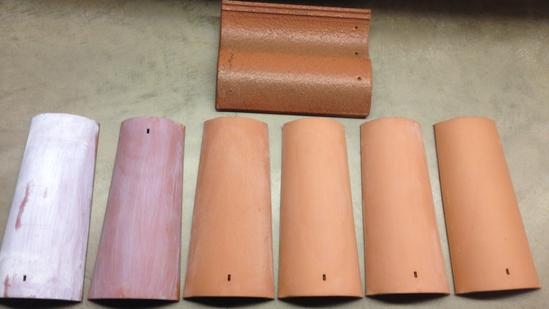
University of California students at Riverside say they have discovered an inexpensive roof coating that can eat smog-forming particles in the air and, if applied to the thousands of tiled rooftops in Southern California, could clean tons of pollution from the atmosphere every day.
The coating is made up of titanium dioxide, a common inexpensive compound found in everything from food to cosmetics. For just $5.00 in materials an average-sized residential roof could be coated, the students calculated, and for one year it would break down the same amount of smog particles as what is generated by a car driven 11,000 miles.
Nitrogen oxide gas emitted by vehicles and power plants, react every day in sunlight to form smog. In the experiment, coated clay tiles removed 88% to 97% of nitrogen oxide pollution from the air, breaking it down into less harmful compounds.
The students calculated that 21 tons of nitrogen oxides would be eliminated daily if tiles on one million roofs were coated with their titanium dioxide mixture. 500 tons of nitrogen oxides are emitted daily in Orange County and the urban portions of Los Angeles, Riverside and San Bernardino counties.
The current team of students, Carlos Espinoza, Louis Lancaster, Chun-Yu “Jimmy” Liang, Kelly McCoy, Jessica Moncayo, and Edwin Rodriguez, are all set to graduate this month, but are hopeful a new team of students will continue with this project and test other variables.
For example, they want to see what happens when they add their titanium dioxide to exterior paint. They are also considering looking at applying the coating to concrete, walls or dividers along freeways. Other questions include how long the coating will last when applied and what impact changing the color of coating, which is currently white, would have.
(READ the details from UC Riverside)



















